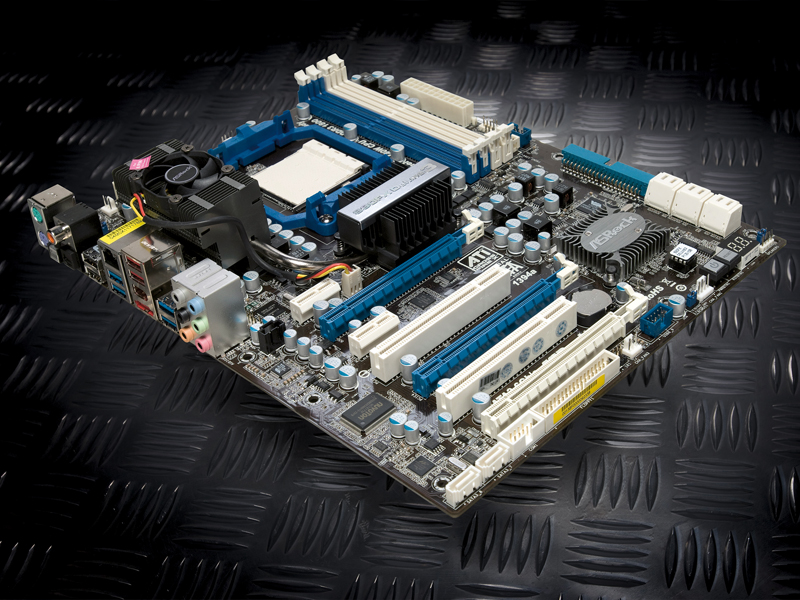TechRadar Verdict
Pros
- +
AMD's top chipset
- +
Two USB 3.0 chips, extra SATA 6Gbps
- +
Plenty of overclocking headroom
Cons
- -
Slightly patchy performance
Why you can trust TechRadar
The ASRock 890FX Delexe 3 is a high end board for mid-range money, what's not to like?
That's what Asrock hopes you'll think when you clock the 890FX chipset and a £125 sticker. But does this performance-orientated board deliver?
If you're in the habit of tag-teaming multiple graphics cards, Asrock has the bases covered with a trio of PCI Express graphics slots and has gone to town on the northbridge and MOSFET cooling, too. It's an active arrangement with a fan on the MOSFET cooler connected to the Northbridge via a heat pipe.
The only slight downside is that it does impinge a little on space around the socket. That said, it is removable.
Anyway, factor in the top-spec 890FX chipset and the 10-phase voltage regulator circuit and we're expecting some spectacular overclocking results.
Next up is the onboard digital status display and CMOS reset switch on the back panel. Neither is essential, but both are genuinely useful and the sort of touches that separate big-money mobos from bargain basement boards.
Indeed, Asrock has gone better than many board makers by soldering on not one but two of those ubiquitous NEC USB 3.0 chips. The Deluxe 3 therefore sports four highspeed USB ports.
Like any 890FX board, the southbridge delivers six SATA 6Gbps ports for nippy storage performance. But Asrock has added an extra SATA 6Gbps controller, allowing a pair of additional ports and also an eSATA socket on the rear panel that also supports the full 6Gbps Monty.
Move into the BIOS and the Deluxe 3's polished act continues. It's heaving with options for both the casual and committed overclocker. You can, for instance, choose from a list of percentage overclocks using pre-optimised settings up to 50 per cent for some quick and easy extra performance.
High, high-end
Alternatively, you can hit the [X] key on boot. This enables Asrock's Turbo UCC feature.
First, it will unlock hidden cores in the CPU. Second, it automatically hunts down the ideal oveclocked settings for any given processor. That's the theory anyway.
For those who prefer to do their own dirty work, all the usual clock, voltage and timing settings are provided. They're also presented in a straightforward and intelligible manner. Handy given that most will not be familiar with Asrock's BIOS menu.
The Deluxe 3 therefore talks like a high-end board. Does it walk like one? In a word, yes. In terms of overclocking prowess, it matches the much more expensive Asus Crosshair with a maximum bus speed of 325MHz. It's not quite as deft with our DIMMs, topping out at 1,600MHz, where the Asus manages 1,800MHz.
As for the Turbo UCC feature, it returns a disappointing 3.45GHz with our 3.2GHz Phenom II chip. Elsewhere, the numbers look pretty solid.
Application and gaming performance is good, as for the most part is storage throughput. The only slight demerits are an underwhelming 297MB/s in the HDTach burst test and a marginally off-the-pace 12.0MB/s of memory bandwidth using default settings.
But this is still an intriguing board with bags of features for a very reasonable price.
Follow TechRadar Reviews on Twitter: http://twitter.com/techradarreview
Technology and cars. Increasingly the twain shall meet. Which is handy, because Jeremy (Twitter) is addicted to both. Long-time tech journalist, former editor of iCar magazine and incumbent car guru for T3 magazine, Jeremy reckons in-car technology is about to go thermonuclear. No, not exploding cars. That would be silly. And dangerous. But rather an explosive period of unprecedented innovation. Enjoy the ride.

